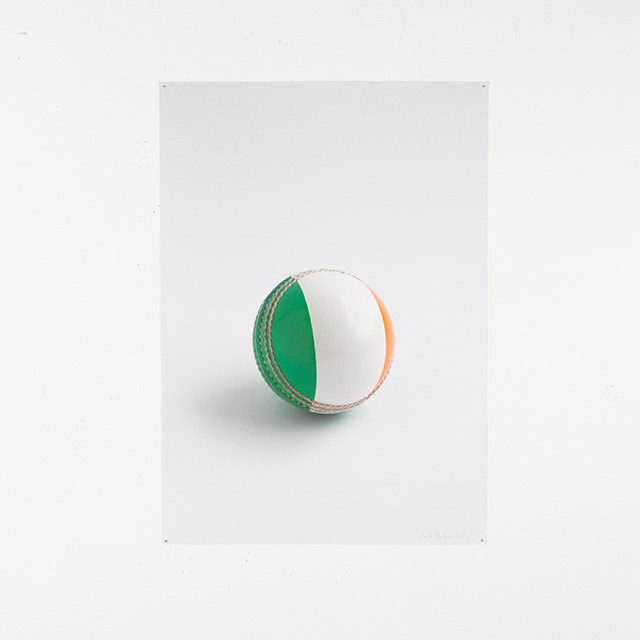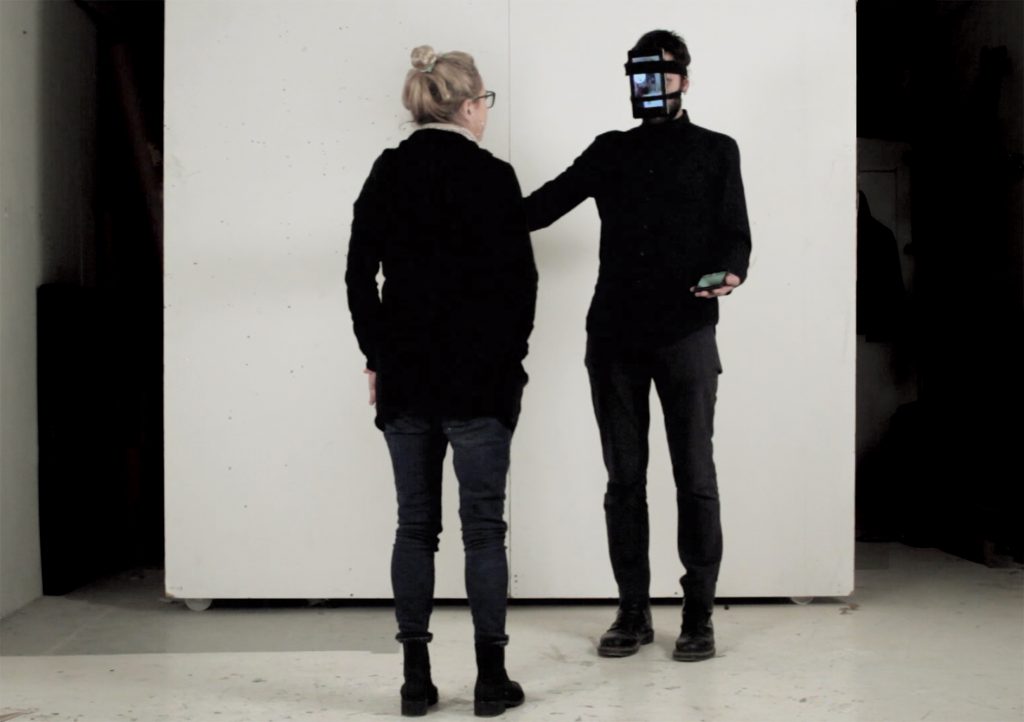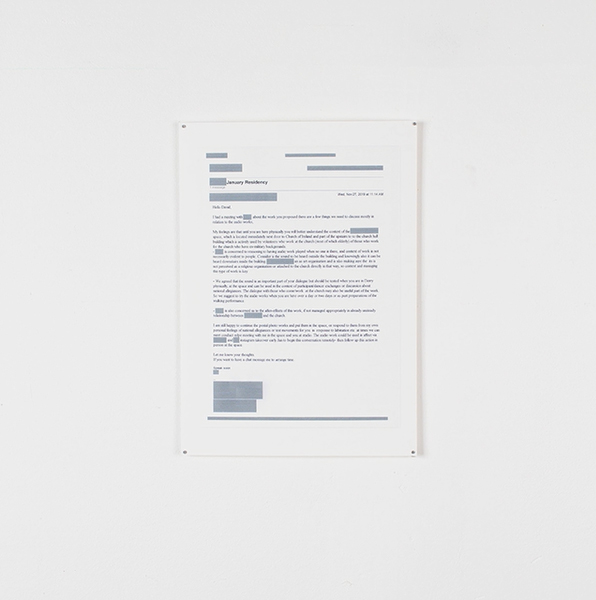CAAKE Winter Residency – January reflections Part 5 DAVID BLACKMORE

I have always been intrigued with the limbo status of this city conveyed when encountering its name Derry / Londonderry aptly captured by its nickname “Stroke City”. I feel affinity with the city despite having only driven through it once before in my life. The schizophrenia eluded to by the cities dual title and nickname resonates with my own bipolar sense of identity. I was born in Dublin to a Catholic Galway working class woman and an English home counites middle class protestant. My life has been divided between the Republic of Ireland and England; visiting grandparents in the UK, living the first 20 odd years of my life in the Republic. Though since 2003 I have been based in the UK and as a result have spent the entirety of my adult life living and working in the UK.

Untitled object 2020, Giclee Hahnemuhle Photo Rag, 42 x 59.4 cm,Edition of 32
I always felt a sense of being an outsider whilst living in Ireland particularly in the later years of my time living in Dublin and often been referred to as a ‘bit of a West Brit’. Having an English father and being exposed to British and English culture at the same time as Irish culture, with their opposing histories, was a contrast that I found difficult to reconcile. Parts of my personality I associate with Britishness and an equal proportion of my character is Irish. I was always acutely aware of the history of conflict between the British and the Irish. “The Troubles” whilst not immediately experienced in my physical everyday its mediated conflict formed the visual and auditory background of much of my childhood.

Photographs from the Artist’s family album circa 1987
I arrived in Derry / Londonderry with preconceptions about the makeup of the city. I thought the city, as its name, was divided equally between two groups catholic nationalists and protestant unionists. However, it quickly became apparent that the city is predominantly nationalist. One school of thought for the reason the city and county of Derry did not form part of the Republic following the partition of the island in 1921 is that it was a strategic decision on the part of the British state; the river Foyle at the time being an active port with access to the North sea and Atlantic ocean.
The research I have been carrying out whilst here has exclusively involved working and talking to people who live in the city and its periphery to better understand the ontology of nationality and geopolitical divisions between nations. Though the initial part of my residency has been remote using Skype to work with participants from my base in London and using the post to send photographic works to Art Arcadia in advance of my visit.

Remote choreography session Chisenhale Studios (London) Left and Art Arcadia (Derry) Right
One of the works I had intended to install in advance was a 24-hour long audio work which I had wanted to realise for a long time. The audio work is silent except for three instances; at 12PM and 6PM The Angelus from Raidió Teilifís Éireann (RTE) and at 1AM God Save the Queen from BBC Radio’s shutdown sequence plays. These sounds were ever present throughout my childhood living in the Republic watching RTE the Republic’s state broadcaster. The legacy of the Catholic Churches involvement in the formation of the Irish Republic, and power, was continually reasserted twice a day everyday continuing to this day. Though within the same 24-hour period the British national anthem could be heard quietly asserting its presence through the airwaves of my parents and British grandparents’ home. This work though met with opposition in advance of my visit due to the context in which Art Arcadia operates. A context that from a distance is easy to think over cautious and pedantic. Though upon arrival the localised politics that Art Arcadia operates within became clear; being located in an old Church of Ireland Sunday School Room adjacent to St Augustine’s church dating from the time of St Columba on top of Derry City walls, perched above overlooking the Bogside and twenty meters from where The Londonderry brigade of the Apprentice Boys practice.
Email regarding the install of audio work in advance of visit
The process of remotely engaging with potential participants for other aspects of research I planned to carry out I found difficult not having any contacts in the area myself. One of these works a relational work and an evolution from an ongoing work entitled European Pa55port consisting of using the activity of creating Venn Diagram exploring the nature of participant’s own associations with their national identity as a premise to develop a conversation on the make-up of and significance of nationality in the era of globalisation and the transnational entity the EU.

Documentation of Venn Diagram / Nationality workshop at Art Arcadia
For the conversation in Derry I sought participants who like myself had a divided sense of allegiance to both Britain and Irish nationalism as well as those on the extremities such as the Nationalist and the Unionist communities.

Automated response from Facebook Ad management to a Call Out for participants
As a result of my background I have developed a personal distance towards notions of nation and nationality. However, nationality and allegiance to the ideology of a nation is of interest to me because of this very reason. Nationality and nationalism is a construct. A construct that predates all of our existence but one which is maintained throughout our lives through channels of social communication that seek to promote a romantic ideal; the myth of nationhood. We identify with a particular nation and feel a connection with its citizens through the shared experience of the nation’s signifiers in our everyday; state broadcaster, postal system, anthem, flag, currency, sport and press. We share these experiences and symbols with other citizens anonymous to us.
Screencapture of participatory walk to the border between Northern Ireland and the Republic of Ireland
For me the awareness of this fiction is no more apparent than when being processed through the frontier of one nation to another with the possible exception (in recent times) of Northern Ireland’s border with the Republic of Ireland. I am interested in the grey space of border lines and our willingness to comply with the order of movement required by being present in these bureaucratic frontier zones as we move from one socially constructed order to another. For me as BREXIT approaches this performance takes on more significance.

Video still from choreography research in advance of arrival in Derry/Londonderry, Chisenhale Studios London
During my time here I have been struck by several things. The close-knit community of artists, curators and a supportive City Council is one thing that will stay with me. Though language is something that has fascinated me. Not only is the term Northern Ireland contentious within the nationalist community whom refer to this part of the island as the North of Ireland. But on a more every day and cross community level the vocabulary used is a mixture of English and Scottish. Teenagers and children are referred to as Wains and Och aye is used for yes. Both these terms I associate with Scotland but here this is an auditory reminder of the history of Scottish plantations and the hybridity of both communities resulting from cross pollination, social engineering and migration which are partly responsible for variations, and intensity, of identities not mirrored elsewhere on the island of Ireland or on mainland Britain. I have been acutely aware of my own southern accent whilst here; more so than on mainland Britain. In my mind this has created a sense of separation from the people I have interacted with from the city. An awareness that I have not lived through what they have and still do.

Documentation still from choreography practice at Art Arcadia
It is hard to ignore this city’s history both long term and within living memory. There are visual signifiers of the conflict and almost at every turn. This intensifies when looking out beyond the city walls behind St Augustine’s down to the Bogside with its infamous murals. I cannot be struck by the sense that whilst these murals serve as a record of the partisan histories in this city; the number of tourists (like myself) walking around this area bring to mind a developing Trauma Tourism. Someone I spoke to here likened it to holiday makers visiting Auschwitz.


